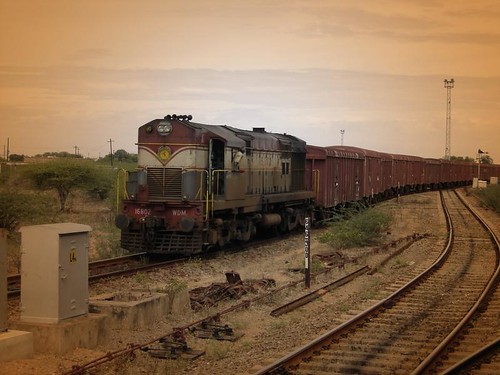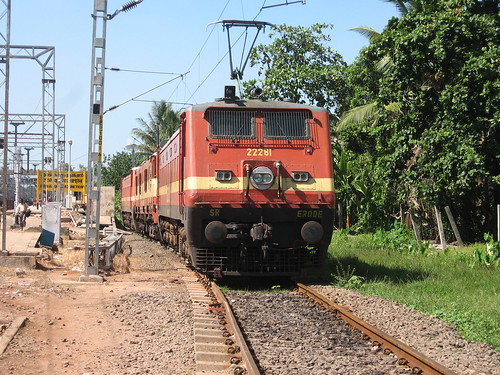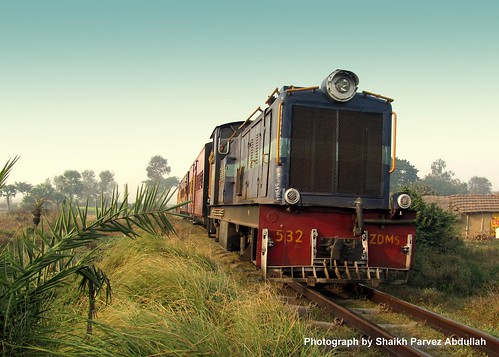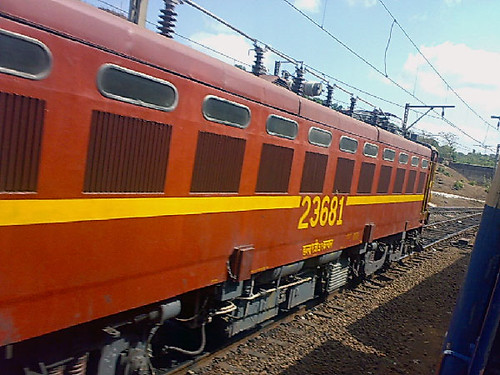Bajra (millets): Maharashtra, Tamil Nadu, Punjab, Andhra Pradesh and Rajasthan.
Barley: U.P., Bihar, Haryana. Its cultivation requires cool climate.
Cardamom: Karnataka. India is the largest producer of cardamom in the world.
Cashewnut: Kerala.
Cinchona: Tamil Nadu (Nilgiri Hills); West Bengal (Darjeeling).
Coconut: Kerala is the leading producer of coconut in India. A coconut tree normally yield 60-70 nuts in a year.
Coffee: Karnataka, Tamil Nadu (Nilgiri Hills) and Kerala. It is a tropical shrub.
Cotton: Gujarat, Madhya Pradesh, Tamil Nadu, Punjab and Maharashtra.
Cotton Seeds: Maharashtra, Punjab, Madhya Pradesh, Andhra Pradesh and Tamil Nadu.
Gram and Pulses: U.P., Madhya Pradesh, Haryana, Punjab, Maharashtra and Karnataka.
Groundnut: Gujarat, Madhya Pradesh and Andhra Pradesh.
Hemp: Maharashtra, Madhya Pradesh and U.P.
Jute: Assam, West Bengal, Bihar and Orissa.
Linseed: Madhya Pradesh, Bihar, Orissa, U.P., Maharashtra and West Bengal.
Maize: U.P., Bihar and the Punjab.
Mustard and Rape-seed (Sarson): U.P., West Bengal, Punjab, Bihar and Orissa.
Poppy (opium plant): U.P., Madhya Pradesh, Punjab, Himachal Pradesh, Jammu and Kashmir.
Rice: Andhra Pradesh, West Bengal, Madhya Pradesh, Bihar, Tamil Nadu and Orissa. Rice is sown on the largest acreage in India.
Rubber: Kerala, Tamil Nadu, Karnataka.
Saffron: Jammu and Kashmir. It is obtained from the stigma of the saffron plant.
Silk: Karnataka, Jammu & Kashmir, West Bengal and Assam.
Spices: Pepper in Kerala and West Bengal; Chillies in West Bengal, Tamil Nadu and Maharashtra; Cardamom in Karnataka and Tamil Nadu; Betelnuts in West Bengal and South India.
Sugarcane: U.P., Bihar, West Bengal, Punjab and Maharashtra.
Tea: Assam, West Bengal, Kerala and Tamil Nadu (Nilgiri Hills), Uttarkhand (Dehradun) and Himachal Pradesh (Kangra Hills).
Tobacco: Andhra Pradesh, Bihar, U.P., West Bengal, Maharashtra, Tamil Nadu and Karnataka.
Wheat: U.P., Punjab, Haryana and Madhya Pradesh. To some extent in Bihar, Rajasthan and Maharashtra. It is sown in October-November and reaped in April.
Kharif and Rabi Crops
Kharif Crops: raised in autumn in June-July. These are cotton, rice, maize and millets.
Rabi Crops: are winter crops in October and November and reaped in April. These are wheat, gram, linseed and mustard.
Favourable climate and soil conditions
Wheat: Its plant requires a cool climate in the beginning, warm and dry weather at the time of harvesting and rainfall at intervals—between 20’’ to 30’’. A clayey soil is very favourable.
Barley: cool climate and a soil poorer than that required for wheat.
Rice: hot and moist climate with rainfall from 40’’ to 80’’ or over and rich soil. The plant is required to remain under water for several days in the beginning. A marshy soil is very suitable.
Sugarcane: an evenly high temperature with sufficient rainfall—about 40’’. It needs a fertile soil, having lime and salt in it.
Tobacco: hot and moist climate; rich soil.
Spices: (pepper, cinnamon, cardamom, cloves, nutmegs) hot, moist and even climate.
Opium: It requires hot and moist climate with a rich soil.
Maize: warm and moist (but not very moist) climate.
Cotton: It requires warm, moist and even climate where summer is long and where the soil contains salt. Sea-breeze is beneficial for quality of the fibre. The ideal situation for plantation is lowlands near the sea coast or on islands in semi-tropical latitudes.
Jute: It requires a high temperature with a minimum of about 80°F during the period of growth. It also needs rich sandy soil, sufficient rainfall well distributed over the period of growth, ample supply of water for soaking of plants and for washing the stripped fibre. It also needs suitable and sufficient labour to handle the crop at the proper time.
Rubber: The plantation of rubber trees is better adapted to areas where the climate is warm and humid.
Tea: (Tea is dried leaves of an evergreen shrub). It requires warm and moist climate. It is grown on mountain slopes. At least 60’’ annual rainfall in showers is needed for the new leaves to sprout. If water is allowed to stay, the roots are destroyed. So mountain slopes on which water does not accumulate are necessary. Soil containing iron is an additional advantage.
Coffee: requires warm and moist climate and a height between 457 metres and 762 metres—rainfall above 60’’. The plant cannot stand extreme cold. When young, the plant is required to be protected from strong sunshine.
Millets: (Jawar and Bajra) require a hot and sufficiently dry climate and poor soil.
Groundnuts: require a hot climate and moderate rainfall 29’’ to 40’’. Soil should be light and sandy.
Oilseeds: require hot and moist climate and a rich soil.
Diseases of Crops
Black heart: Potatoes
Kernel bunt: Wheat
Powdery Mildew: Peas
Red Rot: Sugarcane
Fertilizers
Fertilizers normally contain three main ingredients namely nitrogen, phosphorus and potassium.
Nitrogen: imports a healthy green colour to the leaves.
Phosphorus: hastens leaf development and promotes root growth.
Potassium: plays an essential part in the formation of starch.
Mineral Resources of India
India possesses huge mineral wealth but it is not much exploited. Coal, gold, mica, building materials, salt, petroleum, manganese ore, iron ore, copper ore and ilmenite are produced in quantities to be of real importance to industry and other sectors of economy. Out of these, mica, manganese ore and ilmenite are largely exported. India has, however, adequate resources of industrial clay, steatite, bauxite, chromite, titanium ore etc.
Minerals—Where Found (First)
Aluminium: Kerala. It is extracted from Bauxite.
Antimony: Antimony deposits are found in the Punjab and Karnataka.
Asbestos: Karnataka and Rajasthan.
Barytes: (Barium Sulphate) Tamil Nadu, Andhra Pradesh, Manbhum and Singhbhum districts of Jharkhand.
Bantonite: Rajasthan and Jammu and Kashmir.
Bauxite: Ranchi and Palamau districts of Jharkhand, Belgaum, Kharia and Thana districts of Maharashtra; Balaghat, Jabalpur, Mandia and Bilaspur districts of Madhya Pradesh. It is an ore of aluminium.
Beryllium Sands: Rajasthan, Tamil Nadu, Kashmir and Bihar.
Cement: Katni in M.P., Lakheri in Rajasthan, Jabalpur (M.P.), Guntur (Andhra Pradesh), Jhinkapani (Singhbhum district of Jharkhand), Surajpur (Haryana).
China Clay: Rajmahal Hills, Singhbhum district of Bihar, Kerala.
Chromite: Singhbhum and Bhagalpur (Jharkhand); Ratnagiri, Salem (Tamil Nadu); Karnataka; Keonjhar (Orissa); Ladakh (Kashmir).
Coal: Raniganj (West Bengal); Jharia, Giridih, Karanpur (Bihar); Bokaro, (Jharkhand) Panch Valley and Chanda (M.P.); Singareni (Andhra Pradesh) and Mukum (Assam).
Cobalt: Rajasthan and Kerala.
Copper: Jharkhand (Singhbhum and Barajamda); Rajasthan (Khetri).
Corborundum: Khasi Hills (Assam); Rewa (M.P.); Salem (Tamil Nadu); Karnataka and Jammu & Kashmir.
Diamond: Diamond mines are found in Panna district of Madhya Pradesh.
Feldspar: Burdwan (West Bengal); Rewa (M.P.); Tiruchirapalli (Tamil Nadu); Alwar and Ajmer (Rajasthan).
Fuller’s Earth: (soft clay used in soap-making) is found in Rajasthan, M.P. and Karnataka.
Gold: Kolar gold-fields (Karnataka).
Graphite: Rajasthan, Andhra Pradesh, Madhya Pradesh, Tamil Nadu, Karnataka, Orissa and Kerala.
Gypsum: Bikaner and Jodhpur (Rajasthan), Tiruchirapalli (Tamil Nadu), Gujarat and Himachal Pradesh.
Heavy Water: Talchar in Orissa; Kota in Rajasthan; Baroda in Gujarat; Tuticorin in Tamil Nadu; Nangal in Punjab.
Ilmenite: Kerala. Occurs in the “Bank Sands” of the beaches near Quilon.
Iron Ore: Singhbhum (Jharkhand), Keonjhar and Mayurbhanj (Orissa).
Kaynite: largest deposits occur at Kharswan near Jamshedpur, Singhbhum (Bihar).
Lac: W. Bengal.
Lead: Zawar in Udaipur and at the Banjavi mines in Jaipur (Rajasthan).
Lignite: Neyveli in South Arcot district (Tamil Nadu).
Limestone: Singareni and Singhbhum (Jharkhand), Panchmahal (Gujarat), Balaghat, Bhandara, Chhindwara, Nagpur, Indore, Vishakhapatnam, Sandur (Tamil Nadu).
Manganese: Madhya Pradesh.
Marble: Jaipur (Rajasthan).
Mica: Koderma in Hazaribagh district, Monghyr (Bihar), Nellore in Andhra Pradesh.
Monazite Sands: are found in abundance in Travancore coast (Kerala State). Thorium is processed from Monazite sands.
Nitre: Bihar, U.P., Tamil Nadu and Punjab.
Petroleum: Digboi, Badarpur, Musimpur and Patharia fields of Assam, Cambay basin near Baroda where oilfields have been discovered and production has started. Large-scale drilling for oil is in progress in India in Bombay and Gujarat.
Pitchblende: Gaya (Bihar).
Red Stone: Jodhpur (Rajasthan).
Salt: Sambhar Lake (Rajasthan), and is also obtained from ocean water of Ranns of Kutch, on the north-western and south-eastern littoral (sea-shore) of India.
Saltpetre: Punjab, U.P. and Bihar.
Silmanite: Khasi Hills (Assam); Rewa (M.P.). Silmanite is used in the manufacture of furnace-lining in iron and steel industry. It is also used in glass and ceramic industry.
Silver: Karnataka; Singhbhum and Manbhum (Jharkhand); Tamil Nadu and Rajasthan.
Steatite: Guntur (Andhra Pradesh), Bihar, Madhya Pradesh, U.P., Karnataka and Rajasthan.
Tin: (Bihar) Hazaribagh district.
Thorium: (Processed from monazite sand) Travancore (Kerala).
Tungsten: Bihar, Nagpur (Maharashtra) and Marwar.
Uranium: Bihar.
Zinc: from Zawar mines in Udaipur (Rajasthan).
Zircon: occurs in the beach sands of Kerala and Cape Comorin.














